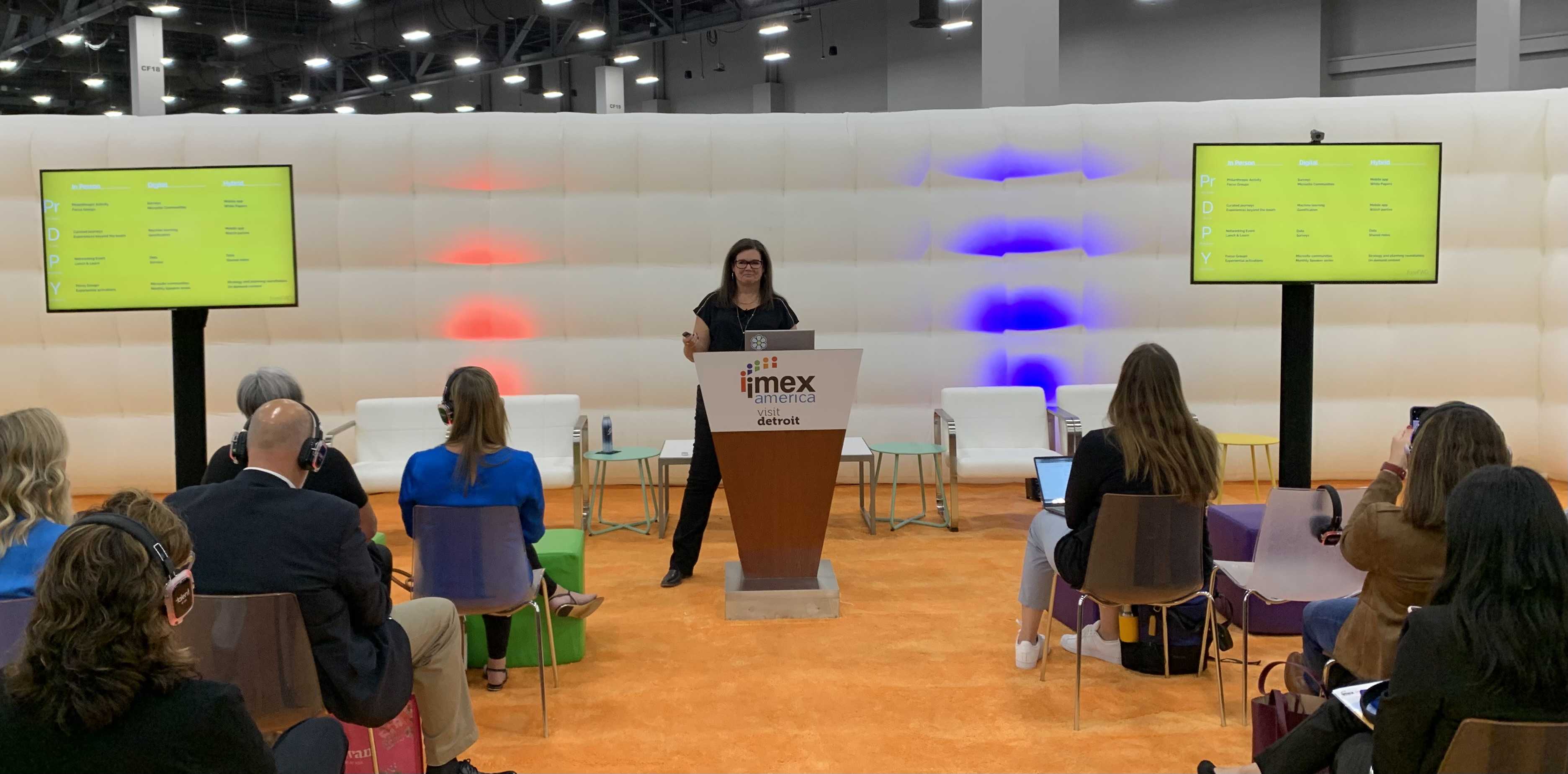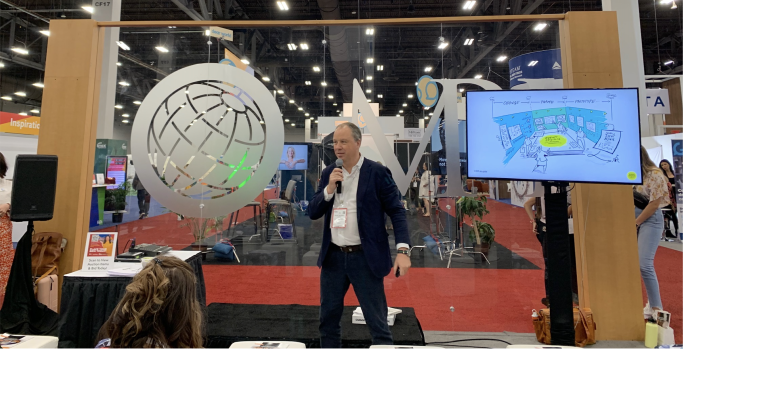Among the tidal wave of educational sessions at the IMEX America show in Las Vegas in mid-October were two that focused on event design to enhance the attendee experience. Interestingly, one session focused on event-design conversations that take place in the host organization’s executive boardroom, while the other focused on design ideas that planners can borrow and adapt from other business and consumer events.
First, Ruud Janssen, CMM, DES, led the discussion about executive-level considerations as a meeting is being built. Co-author of the books Design to Change and Event Design Handbook as well as co-founder of the Event Canvas design methodology, Janssen noted up front in his session that “the objective of every meeting is to change behavior. But to do that, you must first answer these questions: What is the present behavior of attendees in the area of focus? What are their challenges and pain points keeping them from changing their behavior? And what is the behavior you desire from them after the event?”
From that analysis, the host must then articulate the specific value that attendees will receive from the event. Janssen says “if you cannot do that in just a few sentences, how can you expect the audience to understand the benefits of attending the meeting?" In fact, that mission statement should be used not only in the marketing materials for the meeting, but also as a tool to evaluate the relevance of each program element as it’s being developed.
Lastly, Janssen had some unusual advice for planners as they work with executive stakeholders on meetings: “Reclaim your time and improve your effectiveness not by asking for a seat at the table, but by being a trusted advisor to each person who has a seat at the table. This way, you won’t get bogged down in the bureaucratic stuff—but you will still have critical influence.”
The View from Ground Level
In a session titled “Experiential Design: What Can It Mean for You,” Heather Munnell of VDA, a brand-development agency that works with large consumer and B2B companies, delivered specific ideas that planners could use, and suggested other avenues planners could explore to find design ideas that would impress attendees.
 VDA’s director of client experience, Munnell (in photo) emphasized one guiding principle: “Make people use most or all of their senses during a session, and make things active rather than passive.”
VDA’s director of client experience, Munnell (in photo) emphasized one guiding principle: “Make people use most or all of their senses during a session, and make things active rather than passive.”
For instance, she suggested winding, walk-through experiences that use not just video walls but also a variety of lighting, sounds, and perhaps even scents—reminiscent of pop-up retail stores. For breakout sessions, she recommended having two or three digital tablets on each table to deliver other content or interactive quizzes to break up presentation segments.
And for social and teambuilding events, she proposed using retro tools or technologies to heighten interest and start conversations between attendees. One of her favorite ideas: distributing Polaroid cameras and asking attendees to take photos that are related to the objective of the session, or that demonstrate the energy and enthusiasm of the participants. Munnell notes that offering prizes for the best submissions is almost always helpful. Such an exercise also results in content that both the event host and attendees could post to their social-media channels, broadening the reach of the event.
For other sources of event-design inspiration, Munnell suggested looking at cutting-edge get-togethers such as C2Montreal, Dreamforce, ComiCon, and Coachella, in addition to product launches by companies that tend to have a younger demographic. She also noted that inspiration can come from the experiences found in the brick-and-mortar retail stores of interesting consumer brands.
One final out-of-the-box thought Munnell offered to planners: Partnering with a product brand that has no natural connection to yours. For instance, for the launch of new routes to Hawaii, Southwest Airlines partnered with a ukulele maker to provide a small guitar in every seat on a few flights so that travelers could try to learn a bit during the flight—lesson books were also provided. “Some people loved it, and others did not, but none of them will forget it,” she said. A similar “surprise and delight” experience in a general session will leave a lasting impression, noted Munnell.





